
Low transmission fluid makes it hard to lubricate the moving parts inside your transmission properly. It can also affect your transmission’s ability to regulate heat or build up the pressure the valve body needs to change gears on time.
Slow shifting, hard shifting, and slipping out of gear are all common signs that your transmission fluid is low. Checking the dipstick or the inspection plug will quickly confirm that you do have low fluid. Since transmissions don’t burn or use up transmission fluid, the easy assumption is that you have a leak somewhere.
Only you stick your head under the car, and there’s not a drop of transmission fluid in sight. What gives? Is it possible to lose transmission fluid without having a leak?
Some minor leaks in the transmission seals, O-rings, and sometimes even the pan gasket can be so minor that they’re hard to notice. They might only leak when you’re driving down the road, which makes them hard to spot once you’ve been parked for a minute or two. It’s also possible for transmission fluid to leak from less obvious places, such as the axle seals or the connection with the output shaft.
To find where you’re losing transmission fluid from, we will have to take a meticulous approach to inspect every square inch of it.
Do Transmissions Use Fluid Overtime
Automatic transmissions don’t burn, use, or consume transmission fluid to lubricate cool, or shift gears. However, a tiny amount can be lost via the breather port or excess drips taken away by the dipstick or the check port.
Though these are, very tiny amounts of transmission fluid lost over time. Unless you are studious about your transmission fluid levels, you won’t notice any fluid loss without an obvious leak under the car.
This means that if you are losing transmission fluid, there is an unknown leak somewhere. Some transmission leaks are only really active when you’re driving, causing you to leave the fluid on the road without appreciable drips on your garage floor.
6 Symptoms of Low Transmission Fluid?
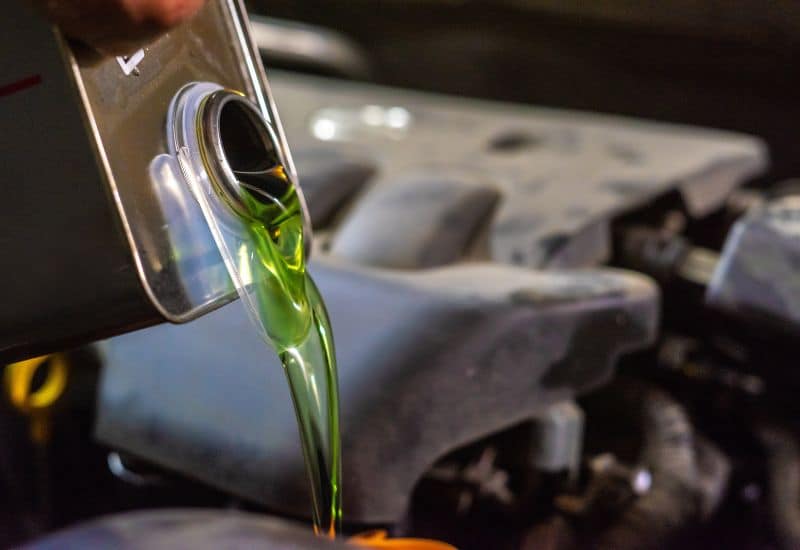
Transmission fluid plays a critical role in nearly every facet of your transmission. So, when it’s low, you’ll likely notice a problem immediately.
1. Hesitating Shifts
An automatic transmission’s valve body relies on proper fluid pressure to activate the clutch packs and bands that are responsible for changing gears. Low transmission fluid means it takes longer for the necessary pressure to build up, which delays the gear-changing process.
2. Hard Shifts
When you lose transmission fluid, the delay in shifting gears often means it shifts up or down out of synch with the engine’s RPMs. When the gear finally does catch, the force is higher, and you get a “Clunk” as the gears finally grab.
3. Getting Stuck in a Gear
If there isn’t enough pressure for the valve body to activate the clutch packs and bands, an automatic transmission that’s lost fluid can get stuck in one gear. In some newer models, this can even cause the ECU to put the car in limp-home mode.
4. Slipping Out of Gear
When you lose a lot of transmission fluid, you can get to the point where there isn’t sufficient volume for the valve body and clutch packs to keep the transmission in first gear. It might hesitate to get into first, then as you set off, it goes a few hundred yards and slips into neutral. You put it back in drive, and it repeats the same slipping problem.
5. Grinding Noises
The loss of transmission fluid also means a decreased lubrication amongst the many moving parts inside your automatic transmission. Gears grind, and heat from friction rises. The bigger concern here is that you might start seeing metal shavings and flecks in the transmission fluid. This is a sign of part pitting and severe wear on the gears, which could leave you destined for a major repair bill in the not-so-distant future.
6. Strange Burning Smells from Overheating
Low transmission fluid from an unknown leak can easily lead to a build-up of heat from excess friction, causing strange odors. This can be a double whammy as the transmission fluid overheats and further loses even more of its lubricating capabilities.
8 Insane Spots to Check For Hidden Transmission Fluid Leak
Finding a secretive transmission leak starts with cleaning the area around the transmission and the surrounding components. You’d be surprised how a little road grime can hide a miniscule transmission fluid leak.
This usually calls for wiping down with a little degreaser and perhaps even some transmission cleaner. Once you’ve got a good volume of road grime off the underbody, you can start looking at the following places for signs of the mysterious transmission fluid leak.
1. Around the Pan Gasket
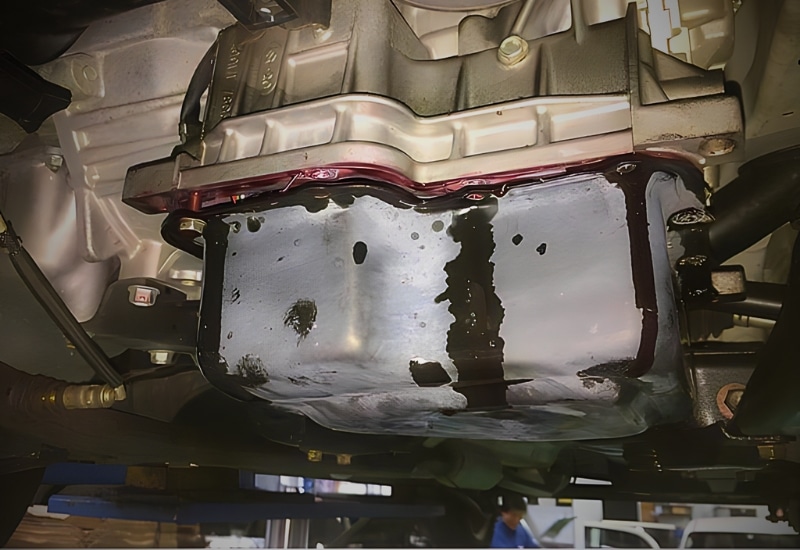
When you’re losing transmission fluid without an obvious leak, one of the first places you want to look is around the transmission oil pan and its gasket. The gasket has a limited lifespan and can fail over time. This usually starts out as a miniscule leak, most active when driving down the road. So, make sure to check it as soon as you park the car while the transmission is still a little bit warm.
If your last pan gasket leaked, and you dealt with it by over-tightening the bolts, you could have deformed the rim of the transmission oil pan or the flange metal. This minor deviation might have been sealed when the replacement gasket was new. Then, as heat and time wore on it, the gasket broke down a little, letting out tiny amounts of transmission fluid.
NOTE: Before you conclude that it’s the pan gasket, feel/inspect the top of it. The leak comes from something higher up if it’s wet with transmission fluid. The fluid then gradually flows around the lip of the gasket, making the flange and the area around the seal wet.
This looked exactly like a pan gasket failure. Though it’s really a leak somewhere else that’s migrating down, the pan gasket is essentially the lowest point of the transmission system. So, it settles there.
This is a very common mistake that a lot of people make. Then, they replace their pan gasket only to find that they’re still losing transmission fluid.
2. The Fill Tube O-Ring
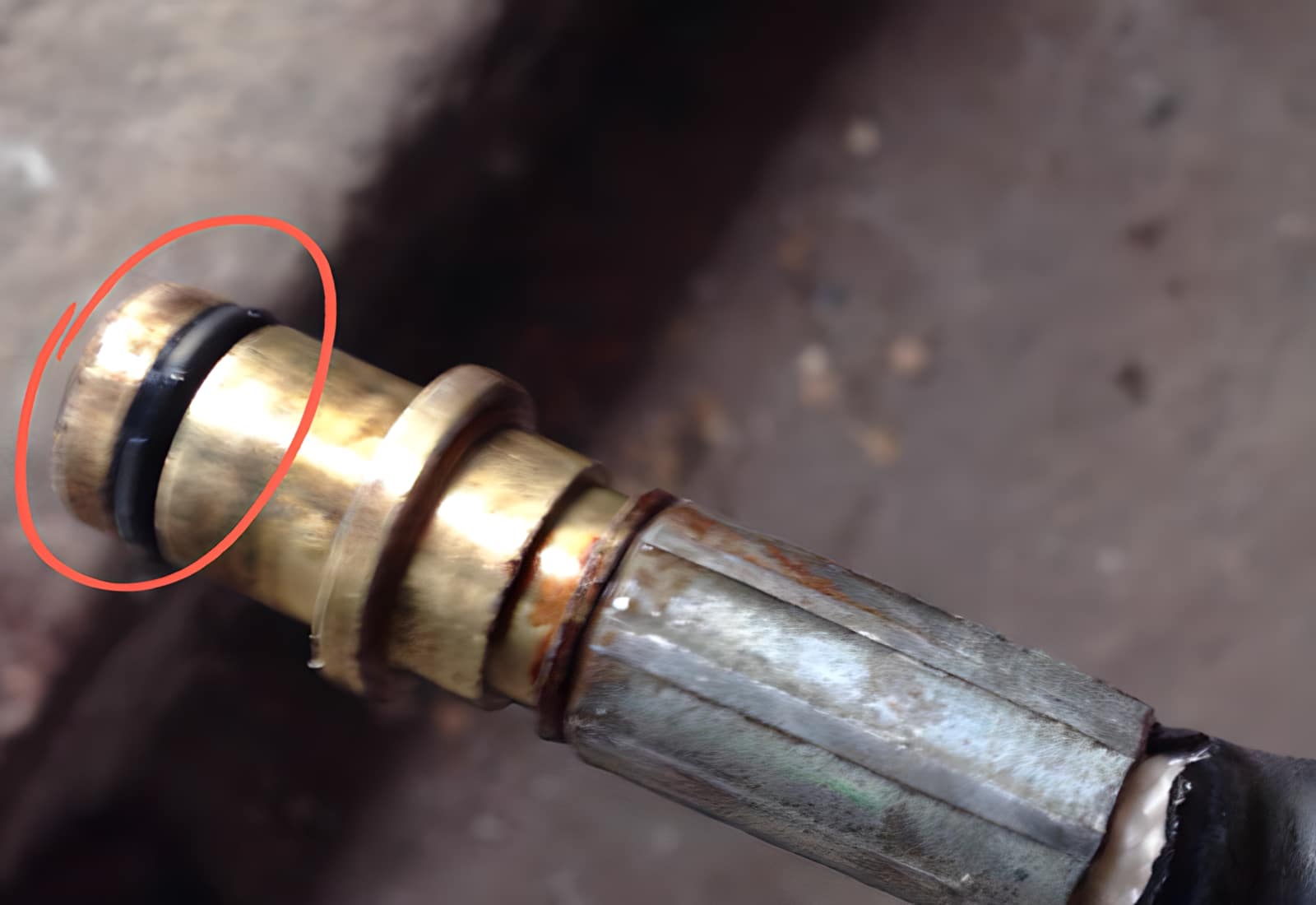
A tiny leak in the O-ring or seal, where the bottom of the fill tube meets the top of the transmission oil pan, is one of those places where you can lose transmission fluid without noticing. This is one of those leaks that can make it look like the oil pan gasket is bad when it’s just the last place the fluid settles to.
Early on, a leak in the fill tube O-ring might not even release enough fluid to make it down to the pan gasket area. It just sits on the top of the transmission oil pan. The only way to find where you’re losing transmission oil at this stage is to put your hand up there to feel for the wetness.
As the leak progresses, it will inevitably get below the level of the O-ring and seems to stop. Especially when the transmission is cold and the fluid is denser, thus settling lower. When the transmission warms up again on a long drive, the fluid expands, and a tiny amount is lost through the bad O-ring seal at the bottom of the dipstick/fill tube.
NOTE: Some fill tubes are held in place with a banjo bolt, including one or two crush washers. It’s also possible for the bolt to leak. This could mimic the O-ring leaking, even though the O-ring itself is still technically good.
If you check the O-ring and it is still pliable and looks solid, your next assumption is the bolt and/or one of the washers, which will be right next to it. Typically, they’re mounted to the right side of the transmission.
To fix this, you’ll have to drain the transmission fluid and replace the crush washers. The temptation is to torque down on them to get them tighter, but it will only worsen the leak in the long run.
3. The Transmission’s Kick-Down Switch
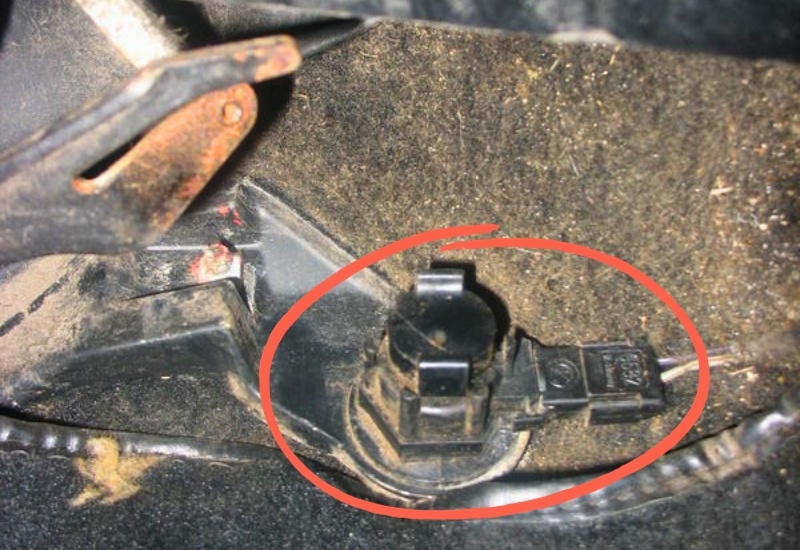
Leaks by the transmission’s kick-down switch can cause you to lose a miniscule amount of transmission fluid over an extended period of time. The kick-down switch works with the engine to downshift when you need rapid acceleration, such as when you pass a car on the highway.
This is another one of those tiny leaks that can mask itself as a pan gasket leak. Especially if your car’s transmission has the switch mounted down low. The fluid leaks out when the kick-down switch is underloaded. Then it might stop when you’re driving normally, making it very hard to find.
Eventually, a leak in the seal around the kick-down switch will degrade to the point where the fluid loss is heavy and easy to spot. Since they’re usually low down on the transmission, the leak will get to the point where it precipitates fluid, even when the car is parked.
4. The Transmission Breather Port
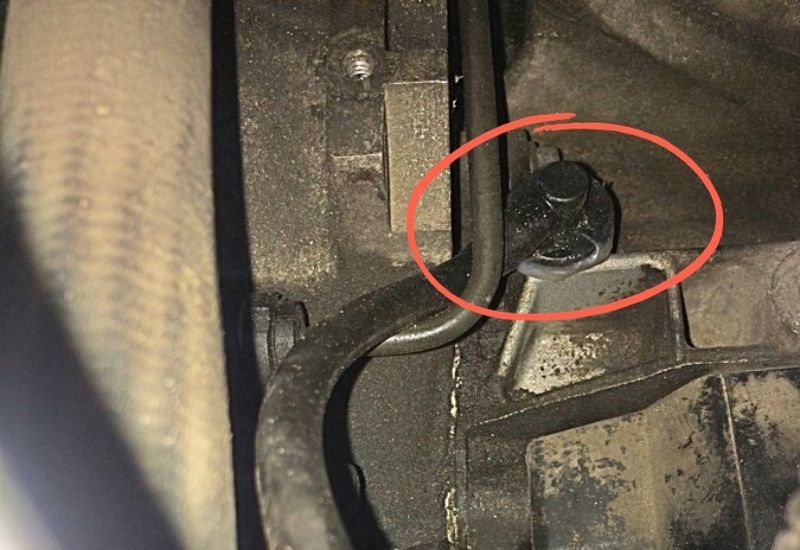
All modern transmissions have a breather port that helps regulate excessive pressure inside the transmission housing. A leak here isn’t always obvious. Especially if excess fluid is coming out from you, overfilling it.
Then if you check it when the transmission is cold, the breather port won’t be expressing fluid like it would have when you were driving, and the warmth of the transmission allows the fluid to expand. This can easily give you the mistaken impression that there’s a leak when there really isn’t.
You might even accidentally add to the confusion if you add more transmission fluid, thinking that it’s low. Then, the overfilled transmission housing expresses the fluid through the breather port again. You’ll keep repeating this cycle if you keep checking it when the transmission is cold. This is one of the reasons why it’s important to check your transmission fluid at the correct temperature range stated in your car’s owner’s manual.
5. The Transmission Drain Plug
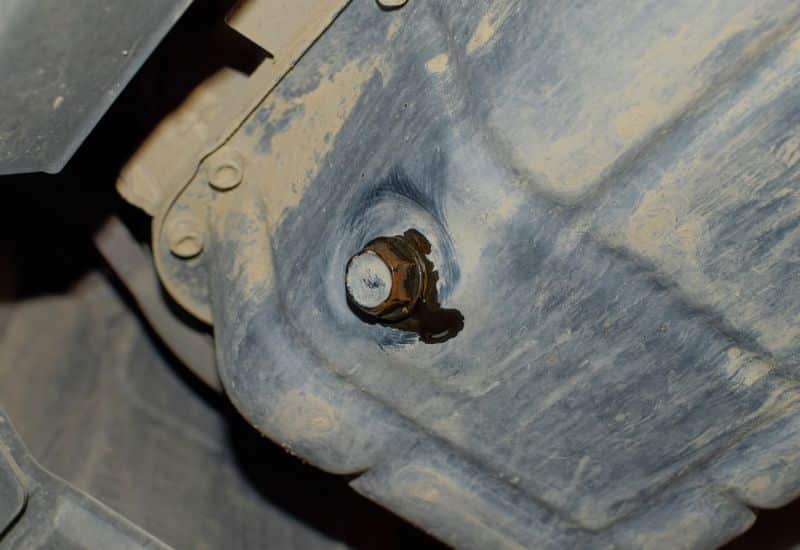
The transmission drain plug is another place where you can lose transmission fluid without an overt leak. This is another one of those common little mistakes made when someone performs a DIY transmission fluid change.
The transmission drain plug is supposed to have an O-ring. When you tighten it down, the O-ring deforms slightly and completes the seal. The next time the drain plug is pulled out, the O-ring has to be replaced.
Suppose you or some other non-professional mechanic recently replaced your transmission fluid and reused the same O-ring. In that case, it’s likely the reason why you’re losing miniscule amounts of transmission fluid.
6. A Leak in a Transmission Cooling Line
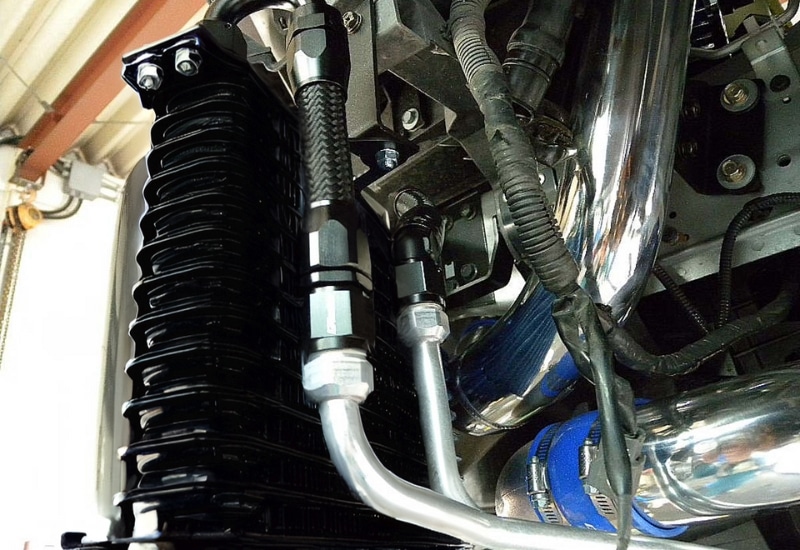
A leak in one of the transmission cooling lines is another common place where you can lose transmission fluid without an obvious leak. Most automatic transmissions have a line going out to the transmission that carries hot fluid away. It then passes through an independently sealed metal tube at the bottom of the transmission. A return line then brings the slightly cooler fluid back to the transmission.
There can be a leak in one of the lines or within the tube that passes through the radiator. These are hard-to-see areas where a leak can hide itself in plain sight. Compounding the problem is that these lines tend to leak aggressively when the car is running and the transmission is hot. When you stop and everything cools down, there’s no pressure or actively moving fluid, which lets the leak hide in plain sight.
Overheating in the transmission with strange burning smells is a potential sign telling you that the mysterious leak is in the transmission lines rather than the transmission housing or its various seals.
7. The Front Seal with the Torque Converter
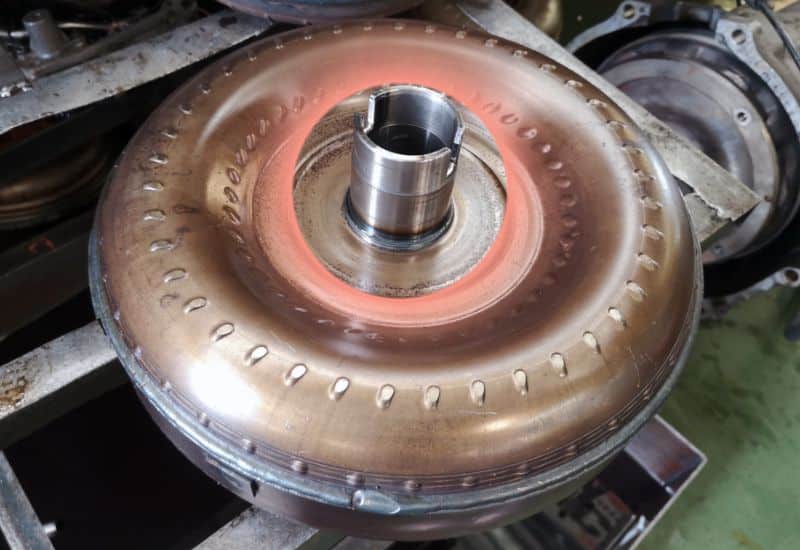
The torque converter can hold a lot of transmission fluid without you even noticing it, as it’s not technically inside the transmission housing. It sits inside a bell housing that receives and delivers pressurized fluid. It’s married to the transmission via a front seal that is normally sturdy enough to handle the pressure exchange between the two.
A major failure in the front seal will give you a major, obvious leak. Though a minor overheating incident can cause a tiny front seal failure. It might start out only leaking during up and downshifting when the pressure changes are high. Since you’re driving, you don’t notice the leak beyond what might be a minor glistening spot left behind where the transmission housing meets the torque converter bell housing. This is why cleaning the transmission before hunting for a leak is important.
Most leaks in the front seal progress rapidly as the pressure changes start to blow the gap wider and wider. Eventually, it will get to the point where it will leak when it’s parked. However it will only leak the fluid that lingers in the bell housing.
Then, when you check the transmission fluid, it’s low; you might even notice drops on the garage floor that run for a while and then magically stop on their own. This is the point where the bell housing has drained below the point of the leak in the seal. This type of leak is obvious on the garage floor and will be coming from the front of the transmission.
8. A Leak in the Axle Seals
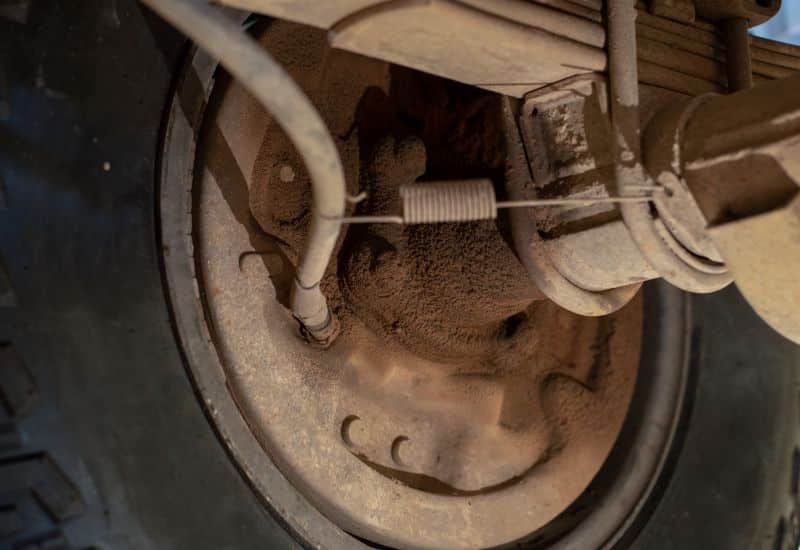
A leak in one of the axle seals can also cause you to lose transmission fluid without any sign of a leak near the transmission housing itself. Early on, a minor leak in an axle seal might not even leave any serious spots on your garage floor as they tend to lose transmission fluid the most when you’re driving down the road.
A minor leak might only leave transmission fluid on the back side of the wheel or on the tire. If you see shimmer or find a greasy texture on the back of a wheel, you might just have found the leak causing your transmission fluid loss.
Frequently Asked Questions
Does the temperature of the transmission matter when checking the fluid level?
One of the easiest mistakes to make when checking your transmission fluid is not considering temperature. Especially if you have a sealed transmission with a check valve instead of a traditional dipstick, it’s always a good idea to check the owner’s manual for the recommended temperature for checking fluid.
If you check your transmission fluid when it is cold, it will look lower than it actually is. You might jump to the wrong conclusion that you’re losing transmission fluid somewhere when really everything is fine. Many people in this situation will then add fluid, mistakenly thinking it’s low, and actually end up with problems caused by an overfilled transmission!
Is It Safe to Drive with a Unknown Transmission Leak?
Anytime you’re losing transmission fluid, you run the risk of the fluid level getting too low that it damages a critical transmission component. Modern automatic transmissions rely on the correct fluid level to create pressure to change gears, lubricate all its complex moving parts, and dissipate heat. When these functions are compromised by low transmission fluid, you run the risk of turning a minor problem into a major repair bill.
Conclusion
When you’re losing transmission fluid without an obvious leak, you need to take a meticulous approach to find it. Automatic transmissions don’t burn or use transmission fluid in any way. They’re meant to be sealed systems that maintain a precise fluid level to operate safely and correctly.
Early on, minor leaks around the pan gasket, oil drain plug, kick-down switch, and axle seals might not reveal themselves until the car is driving down the road. You get home, your transmission fluid is low, but there aren’t any obvious spots on the garage floor. Checking around these areas and making sure you are checking your transmission fluid when it’s at the correct temperature can help catch a minor problem before it becomes a major leak.
If you’re losing transmission fluid without an obvious leak, but the car is running hot, or you notice the telltale odors of the transmission overheating, you might want to check the lines running to the radiator. Sometimes, even a minor leak where a metal pipe meets a rubber hose is enough to cause a gradual loss of transmission fluid without any ugly, noticeable leaks.

Written By
Jason Farrell
Jason Farrell is a certified master technician, the editor of Mechanic’s Diary in Pittsburgh, Pennsylvania. He is ASE (Automotive Service Excellence) certified and earned a Bachelor’s Degree in Automotive Technology from Pittsburg State University. With nearly 18 prior years of experience in the automotive field, he has extensive knowledge about Domestic, European, and other foreign makes and models of cars and light trucks. Jason’s experience working as a technician and service manager at dealerships, gave him the experience and know-how of most aspects of inspection, diagnosis, and repair from engine and drivability to electrical, HVAC, brakes, steering and suspension and everything in between.
